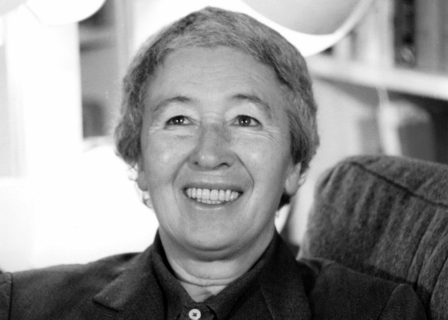
WTI Magazine #75 2016 January 18
Author : Giovanni Verde Translation by:
Gae Aulenti has been one of the most symbolic Italian women of the '900. The history of the Italian architecture, not only the female one, is inextricably linked to her name. Gae Aulenti was born in Palazzolo della Stella, in Friuli Venezia Giulia, on December 4 1927, daughter of Aldo Aulenti from Apulia and Virginia Gioia, Neapolitan of Calabrian origin. Her architectural formation goes on in Milan in the fifties, where the Italian architecture is engaged in an historical cultural research with the goal of recovering the architectural values of the past and the built environment that already exists, a movement that will give birth to Neoliberty. Aulenti is part of this process, which arises as a reaction from the rationalism.
Gae Aulenti begins attending the Art School of Florence, but then goes back to the North where she privately finishes her studies. In an interview she will say: "I was doing few small services for the Resistance. In Biella I was friend with two Jewish sisters who disappeared overnight. My social conscience was born there".
In 1948 she is at the Politecnico di Milano, which has become her city, and there begins to look at the international rationalism, at artists such as Gropius, Le Corbusier and Wright. In 1965 she has her first big success, the famous table lamp "Pipistrello" (Bat), specifically designed for the Olivetti showroom in Paris, also designed by her. Shortly after, she will do the same for the Olivetti showroom in Buenos Aires. The collaboration with the renowned producer of typewriters gives her a certain reputation, so much so that shortly after Gianni Agnelli will call her for the renovation of his apartment in Milan. The friendship between them will last for a lifetime, and for Agnelli Gae Aulenti will conceive numerous projects.
In the eighties she works on what probably is her most famous and admired project. Gae Aulenti will be entrusted with the preparation and design of one of the most famous museums in the world: the Musée d'Orsay in Paris. Originally a railway station in the center of the French capital, retrained to avoid the demolition, the museum features a light-colored limestone, personally chosen by the Italian architect, perfect to give light to the interior.
Gae Aulenti will also work at Palazzo Grassi in Venice, at the Asian Art Museum of San Francisco; and again staging the National Museum of Modern Art Centre Georges Pompidou in Paris, the project for Piazzale Cadorna in Milan, the Museum of Catalan Art in Barcelona and the former Scuderie del Quirinale in Rome. She sees her architecture always in close relation and interconnection with the existing urban environment, which almost becomes its generating model: trying, with this, to transfer in its architectural space the multiplicity and intensity of the elements that define the urban universe.
Gae Aulenti dies in Milan on October 31, 2012, aged 84. The talented architect has achieved during her life many prizes and awards. Among the many: the Legion d'Honneur and the title of Commandeur dans l'Ordre des Artes et des Lettres by the French Republic, and the Special Award for Culture of the Italian Republic. She also had the honor of being appointed President of the Academy of Fine Arts in Brera, Milan.
At the center of her vision is therefore the architectural context: "You cannot do the same thing in San Francisco and in Paris" she said. "You need a very careful analytical work before to design: studying history, literature, geography, even poetry and philosophy. You must invent solutions, everytime different than the others: and in doing this, the books help. Then comes the synthesis, and finally the prophetic part: the ability to build things that will last in time. If architecture is thrown away, too much easily done, it becomes a pile of rubble".



